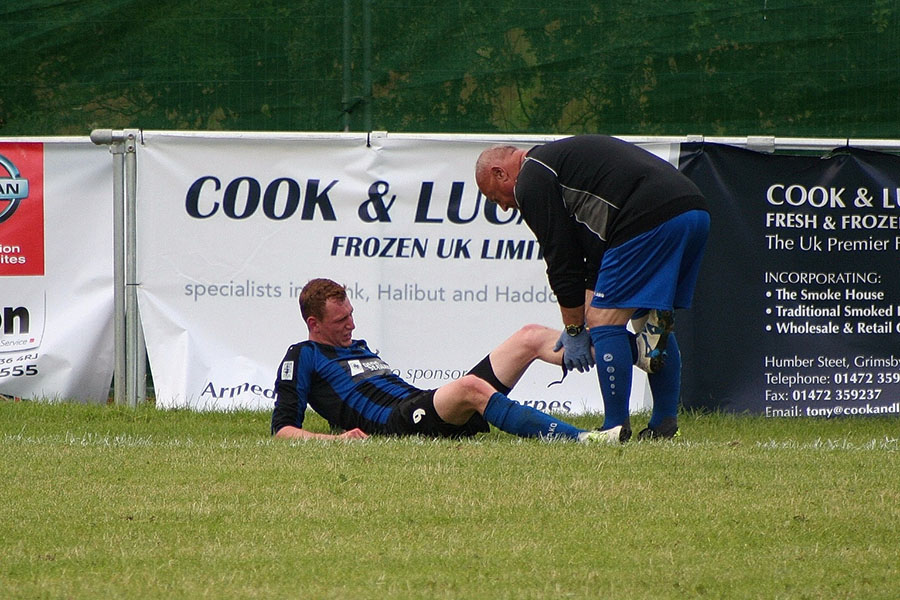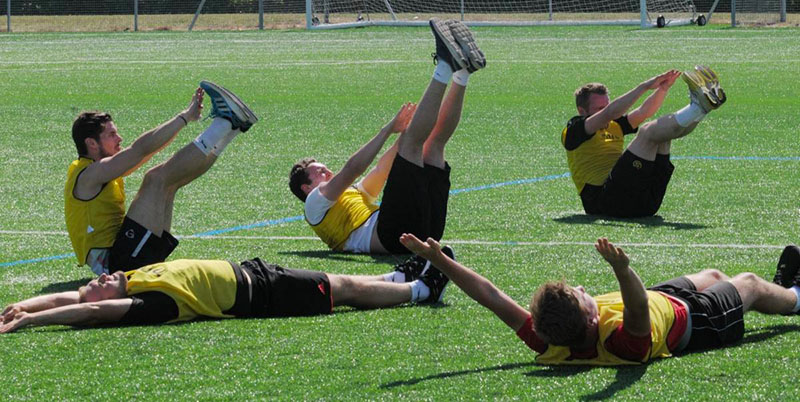Football is the world’s most commonly participated sport and requires individuals to possess a broad range of technical, psychological and athletic abilities. The simplicity of the game makes it accessible to anyone and is enjoyed by males and females of all ages and abilities.
However, for those that want to improve their performance and compete at their best it’s often about more than just pure enjoyment and they may seek to improve their physical condition to maximise their impact on the pitch.
Strength and Conditioning is a contemporary term used to describe the deliberate attempt to improve physical attributes. Research indicates that by improving your strength and condition you can significantly reduce your risk of injury and improve your on-pitch performance by being faster, jumping higher and running further than your less developed opponents.
This blog post aims to explain how strength and conditioning can reduce your risk of injury, improve your performance and provide some recommendations on how to do this at various points in the season.
Strength and Conditioning
As mentioned above, the two main aims of strength and conditioning are to a) reduce injury risk and b) improve performance. The two do very closely overlap, but we’ll look at these individually below and provide some recommendations on how to incorporate these into your training.
Injury Prevention
Remaining injury free should be the primary aim of any strength and conditioning activity. Any player will explain how frustrated they are when they cannot play due to injury and once an injury happens it quite often returns or lingers for a while, limiting training or match performance. Injury prevention (also known as pre-habilitation) work is a daily part of a professional player’s life and can help to reduce the frequency of non-contact injuries.

No player will remain injury free forever, but the idea is to reduce internal risk factors that contribute to injury including muscle weakness, poor posture or range of movement (flexibility), poor movement (technique) and reduce the likelihood of external (environment or opposing player) factors causing injury during contact, landing and accumulating over time.
Moving effectively is of paramount importance to the football player. The ability to move each joint through its full range of motion will help reduce compensations, poor posture and additional stress on muscles and joints which over time lead to overuse or traumatic injuries.
There are a range of activities that you could do to reduce your injury risk such as Yoga and Pilates, but the emphasis must be on moving well through full range of movement. The key areas to focus on are the hips, knees, ankles and core stability as these are commonly inhibited through repeated overuse or weakness.
Taking 10-15 minutes before or after your training session each day to perform the exercises below will significantly improve your flexibility, stability and movement to reduce injury risk:
Hop and Hold – aimed to develop single lag stability and landing technique.
Bridge – exercise to help strengthen the glute muscles which help stabilise the knee.
Arabesque – improves hamstring flexibility and single leg stability.
Bear walk – full body mobility, stability and flexibility.
Hip Flexor Stretch – improves flexibility at the front of the hip.
Improve Performance
So, now you are on the road to staying injury free we can start to look at how to improve your performance and the foundation to this is to improve strength. Strength underpins much of what athletes in general need – speed, power, agility and is heavily linked to injury reduction. If you can improve the amount of force your muscles can produce and accept from the ground, you will be on the right path to running faster, jumping higher and changing direction quicker.
Physics suggests that pushing harder into the ground when we sprint pushes us further with every step so being stronger directly helps with both short and long distance sprints. Generally this strength is developed through resistance training using loads of around 60-80% of your maximum and for 6-8 repetitions. This can be repeated 3-4 times on each exercise and each muscle should be trained 1-2 time per week.
Although research suggests we should use 60-80% of our maximum, this will be highly individual. The emphasis of any resistance exercise should be technique and completing the exercise well, through a full range of movement. If you feel that technique is being compromised, reduce the resistance. Some go to lower body exercises to help with this are:
Squat – improves strength of the quadriceps, gluteals and hamstrings.
Box Step-Up – Improves single leg strength, stability and quadricep and gluteal strength.
Deadlift – improves strength through the hamstrings and back.
Strength training can then be supplemented with plyometrics which help to convert the strength qualities into power, which is defined as the ability to generate force at speed, a common requirement of many tasks in football. Once you are strong, you can then train your body to call upon this strength faster, meaning you can beat opponents to the ball and change direction quicker. Plyometrics can be a more advanced technique so start slowly and do not be surprised if you feel sore or stiff the days after starting – take your time and progress slowly.
The final area to discuss is metabolic conditioning (also known as aerobic endurance). This is crucial to the performance at a footballer as they need to be able to get around the pitch. Adult professional players cover between 9-12 kilometres during a game so having a solid level of metabolic fitness is of paramount importance. This has traditionally been trained by long, continuous paced runs however they are slightly outdated and more contemporary methods have replaced it.
Methods such as High Intensity Interval Training (HIIT) and Tabata are now more commonly adopted by professionals to work at match intensities but for shorter periods. If this is something you want to achieve, aim for 2-3 x 15-20 minute HIIT sessions per week to see a sharp increase in your metabolic condition.
Periodisation
The football season lasts around 9-10 months and can be jam packed with matches’ which leaves little time for the training and conditioning outlined above.
In-season may be more about recovery and trying to prevent accumulative fatigue building up over weeks of competition. If this is the case, limit your training to remain fresh, focus on recovery and try to maintain a healthy, mixed diet full of fruit and vegetables. Strength and metabolic conditioning training should be done 48-72 hours before matches to allow recovery but lower intensity injury prevention work can be done daily leading up to the game.

Out of season (off-season) should have two distinct phases. The first should be about recovery and recuperation both psychologically and physically. You have had a tough season, try to relax and unwind by doing other things than football.
The second phase is where you start preparation which may involve more regular sessions of the work included above. You should aim for 2-3 metabolic conditioning sessions and 3-4 strength based sessions each week separating the strength and conditioning sessions by at least 6 hours – although ideally they should be on separate days. Progressively increase the intensity of your training towards the season with a 7-10 day taper (reduction) before the first game to ensure you are fresh for the first match.
Condition in time the new season
The most important aspect of strength and conditioning activities is to move well and move correctly in all movements. By doing this you will be efficient, stronger and reduce the movement compensations which might lead to injury.
As you progress, improve the difficulty (load or complexity) and you will enhance your physical qualities to be a better athlete, and therefore a better player.
Athlete Development Coach/Lecturer
Real ale and coffee enthusiast.

